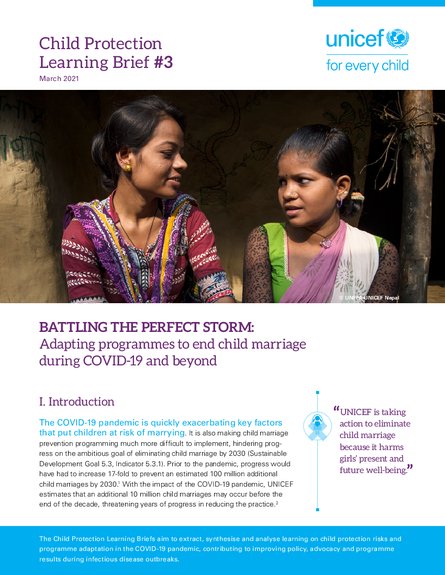
The COVID-19 pandemic is quickly exacerbating key factors that put children at risk of marrying. It is also making child marriage prevention programming much more difficult to implement, hindering progress on the ambitious goal of eliminating child marriage by 2030 (Sustainable Development Goal 5.3, Indicator 5.3.1). Prior to the pandemic, progress would have had to increase 17-fold to prevent an estimated 100 million additional child marriages by 2030. With the impact of the COVID-19 pandemic, UNICEF estimates that an additional 10 million child marriages may occur before the end of the decade, threatening years of progress in reducing the practice.
This learning brief synthesizes evidence3 on how the COVID-19 pandemic is impacting child marriage risk factors and how UNICEF, within the Global Programme, is pivoting to identify and respond to risk factors and adapt programming to COVID-19 limitations. With a focus on UNICEF’s response in five Global Programme countries – Bangladesh, Ghana, Nepal, Uganda and Yemen – the brief summarizes key lessons learned to inform current and future programme planning with evidence from the first and second waves of the pandemic.
